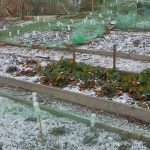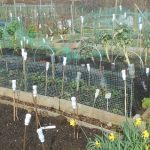Tales from the Garden – Early Spring at Redcroft
It is a sure sign that Spring is on the way when Anna starts her blog again. Her beautiful Edinburgh garden, Redcroft, is open to the public in May through Scotland’s Garden Scheme. You should try to visit if you can – it is most certainly worth it.
Early Spring at Redcroft
We have had a number of spells of serious frost this winter and most damaging was on December 13th when the thermometer read -6.3 outside the greenhouse. As a result of that we have had to take out a large, old Euphorbia mellifera and a couple of smaller ones might have to go too. Our large clumps of Melianthus major have all been raised to the ground but now a few brave shoots have emerged. Last week we had a few bright sunny days before more serious cold set in. Inspired by the brightness of the winter sunshine I went out with my trusty iPhone to take these photos.
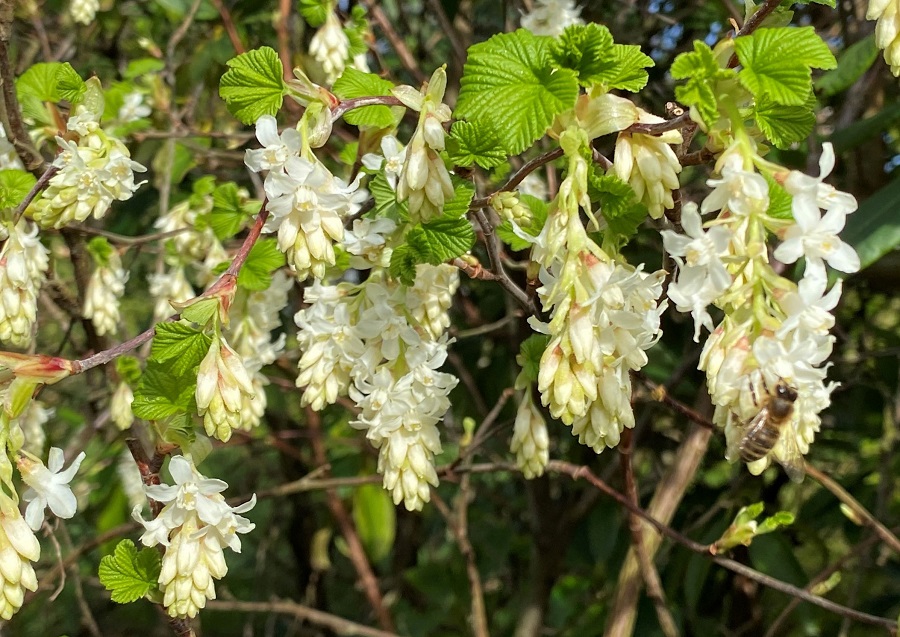 One of the earliest shrubs to flower is the flowering currant, Ribes sanguineum ‘White Icicle’, a very accommodating and reliable shrub which you can choose to prune or not. The pink version used to be one of our most numerous plants here but only a few remain. The early bees are pleased to find some nectar.
One of the earliest shrubs to flower is the flowering currant, Ribes sanguineum ‘White Icicle’, a very accommodating and reliable shrub which you can choose to prune or not. The pink version used to be one of our most numerous plants here but only a few remain. The early bees are pleased to find some nectar.
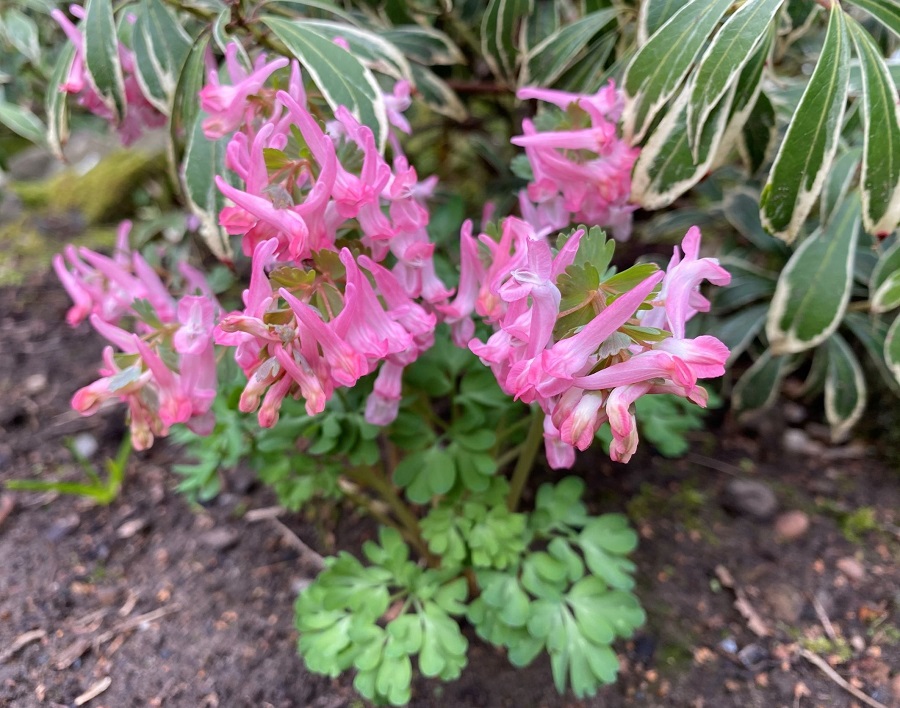 A bonus this year is the flowering of this Corydalis in the rock garden. I have frequently been tempted to buy these exquisite early flowerers at the shows but until now they have failed to reappear in subsequent years. Now there are even some seedlings so I am looking forward to a substantial clump. The variegated leaves behind it are from a Pieris which has been there for many years and has grown very slowly.
A bonus this year is the flowering of this Corydalis in the rock garden. I have frequently been tempted to buy these exquisite early flowerers at the shows but until now they have failed to reappear in subsequent years. Now there are even some seedlings so I am looking forward to a substantial clump. The variegated leaves behind it are from a Pieris which has been there for many years and has grown very slowly.
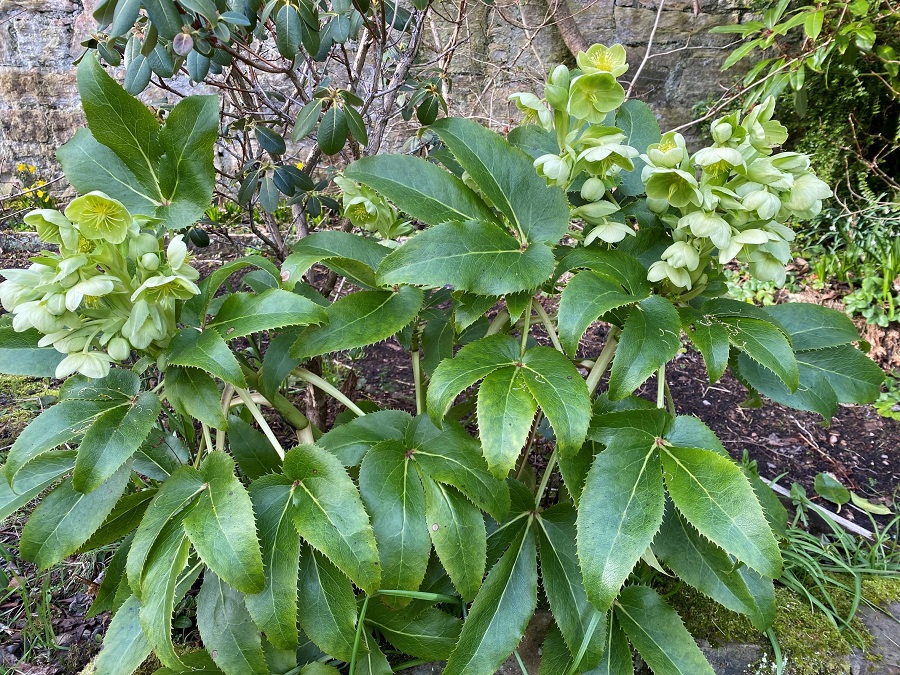 Helleborus argutifolius, which used to be H. corsicus, does the best of the hellebores here and seeds itself plentifully. Sometimes it is in need of staking but here it seems to be able to keep itself upright in spite of being quite tall.
Helleborus argutifolius, which used to be H. corsicus, does the best of the hellebores here and seeds itself plentifully. Sometimes it is in need of staking but here it seems to be able to keep itself upright in spite of being quite tall.
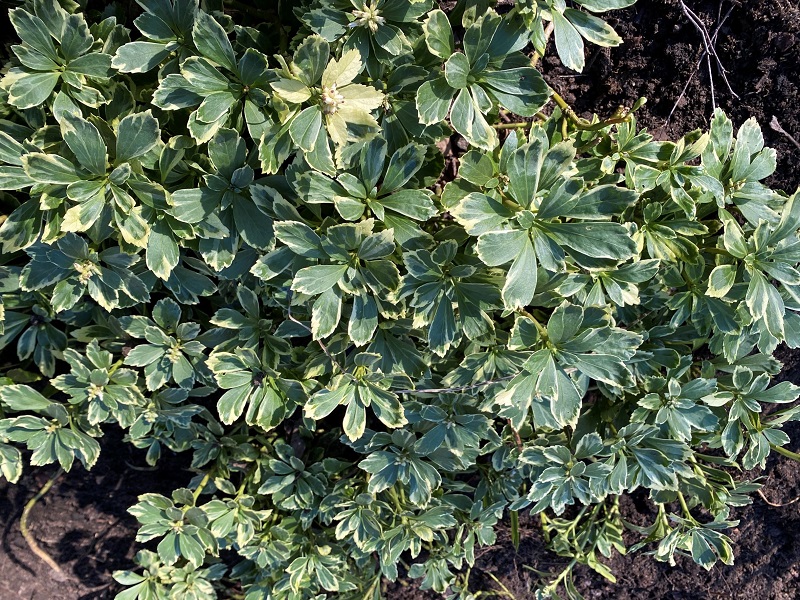 We haven’t paid much attention to ground cover here, relying mainly on plentiful Geranium pheum and G. macrorrhizum. We have had this Pachysandra terminalis ‘Variegata’ for many years and it makes very good ground cover, consistently neat and healthy looking with almost invisible flowers. But it is slow to spread. The instructions are to propagate by division in Spring but the divisions are often reluctant to grow.
We haven’t paid much attention to ground cover here, relying mainly on plentiful Geranium pheum and G. macrorrhizum. We have had this Pachysandra terminalis ‘Variegata’ for many years and it makes very good ground cover, consistently neat and healthy looking with almost invisible flowers. But it is slow to spread. The instructions are to propagate by division in Spring but the divisions are often reluctant to grow.
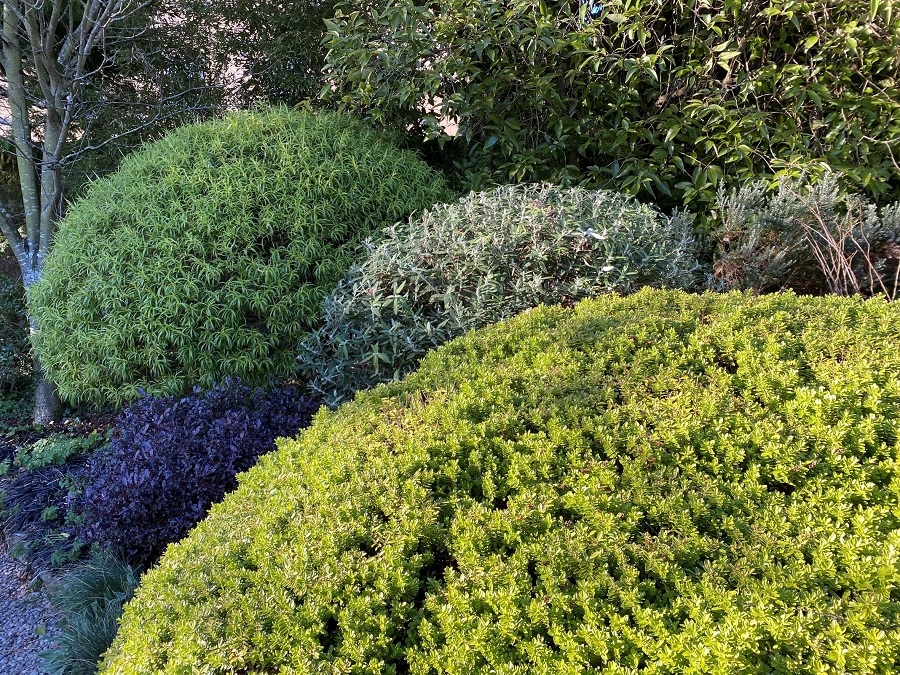 I sometimes claim that our garden is all about shapes, and although I know that it is completely untrue, perhaps this photo gives some support to the claim. Clipped Hebes of different types are seen here either side of Buddleja loricata and trusty Pittosporum ‘Tom Thumb’ which keeps its shape with almost no clipping.
I sometimes claim that our garden is all about shapes, and although I know that it is completely untrue, perhaps this photo gives some support to the claim. Clipped Hebes of different types are seen here either side of Buddleja loricata and trusty Pittosporum ‘Tom Thumb’ which keeps its shape with almost no clipping.
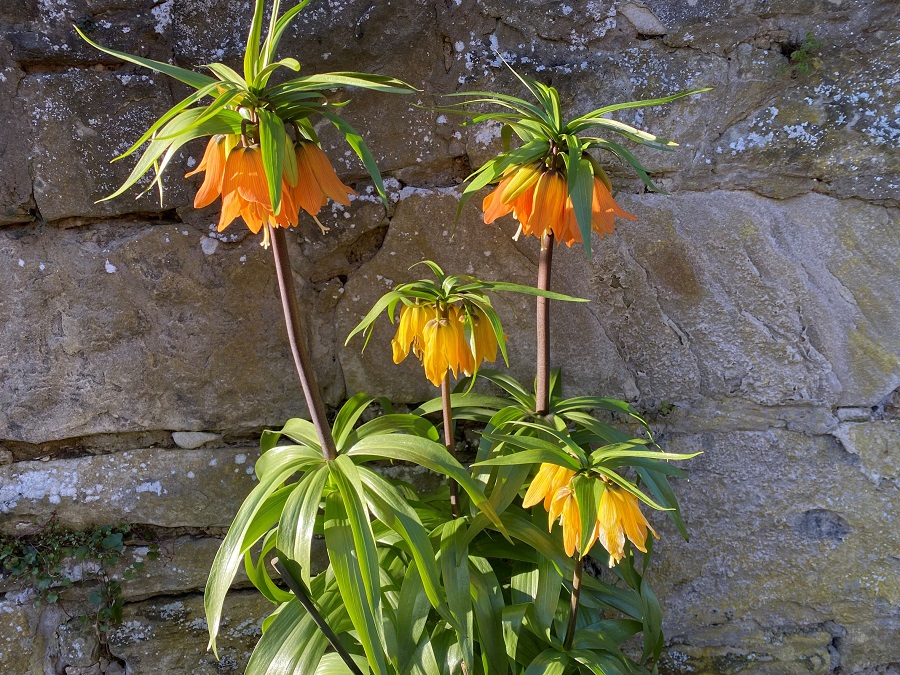 It is always exciting when these Fritillaria imperialis, or crown imperials, flower. I don’t know how they come to be different colours in this pot – perhaps I mixed up new bulbs with old ones. I like the way they have arranged themselves, perhaps in order of seniority. They made a remarkable recovery from being frosted. Each flower head was bent right over but when I put them in a shed to avoid the frost, they recovered with no harm done. They never seem to flower when put in the garden.
It is always exciting when these Fritillaria imperialis, or crown imperials, flower. I don’t know how they come to be different colours in this pot – perhaps I mixed up new bulbs with old ones. I like the way they have arranged themselves, perhaps in order of seniority. They made a remarkable recovery from being frosted. Each flower head was bent right over but when I put them in a shed to avoid the frost, they recovered with no harm done. They never seem to flower when put in the garden.
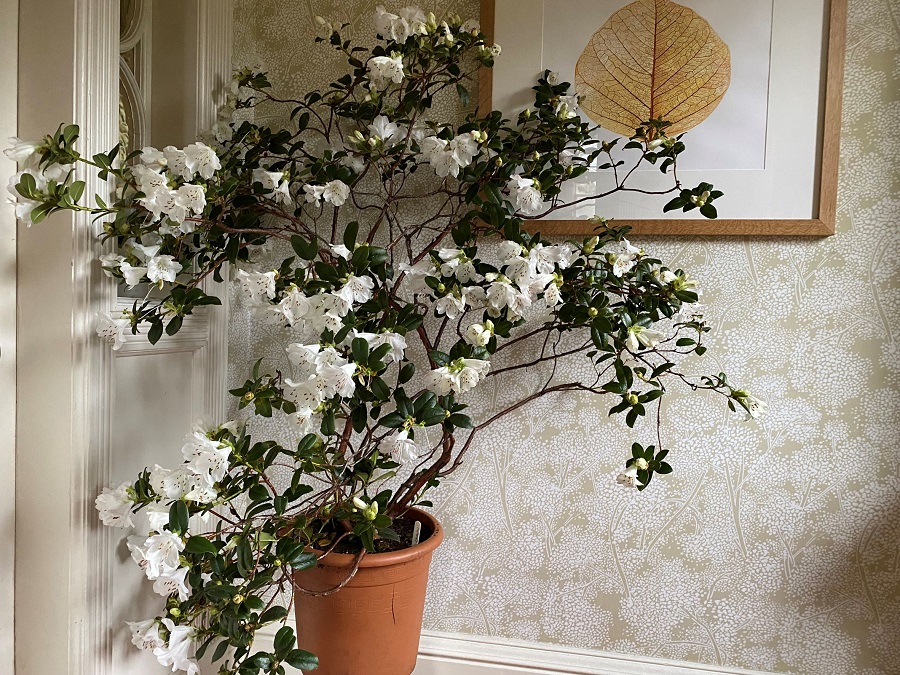 I thought this rhododendron was Cilpinense but when I looked it up in Cox’s ‘Guide to Choosing Rhododendrons’ I found that it was more likely the closely related hybrid ‘Snow Lady’ as that is pure white, whereas the former at least starts out pink. It does well in the greenhouse and flowers so early that it would not stand a chance outside. It is seen here in our entrance in front of Sharon Tingay’s beautiful painting of a pepul leaf.
I thought this rhododendron was Cilpinense but when I looked it up in Cox’s ‘Guide to Choosing Rhododendrons’ I found that it was more likely the closely related hybrid ‘Snow Lady’ as that is pure white, whereas the former at least starts out pink. It does well in the greenhouse and flowers so early that it would not stand a chance outside. It is seen here in our entrance in front of Sharon Tingay’s beautiful painting of a pepul leaf.
At this moment in mid-March there is so much waiting to perform. We are thinking ahead to our opening on Saturday 13th May and Sunday 14th from 2 – 5pm. Our neighbours at Innerwick are opening as well. This year the proceeds will go towards the food bank at Saughton, near here. Preparations for the plant sale are well under way and it will certainly be a good one. A band will be playing on both days and we welcome children, buggies etc and dogs on leads. Teas will be available in both gardens.
Anna Buxton
15th March 2023
All photos taken recently by Anna.






